How To Protect Your Shrubs In Winter – 8 Helpful Tips
Winter is coming! Be ready with your burlaps, anti-desiccant sprays, and windbreaks
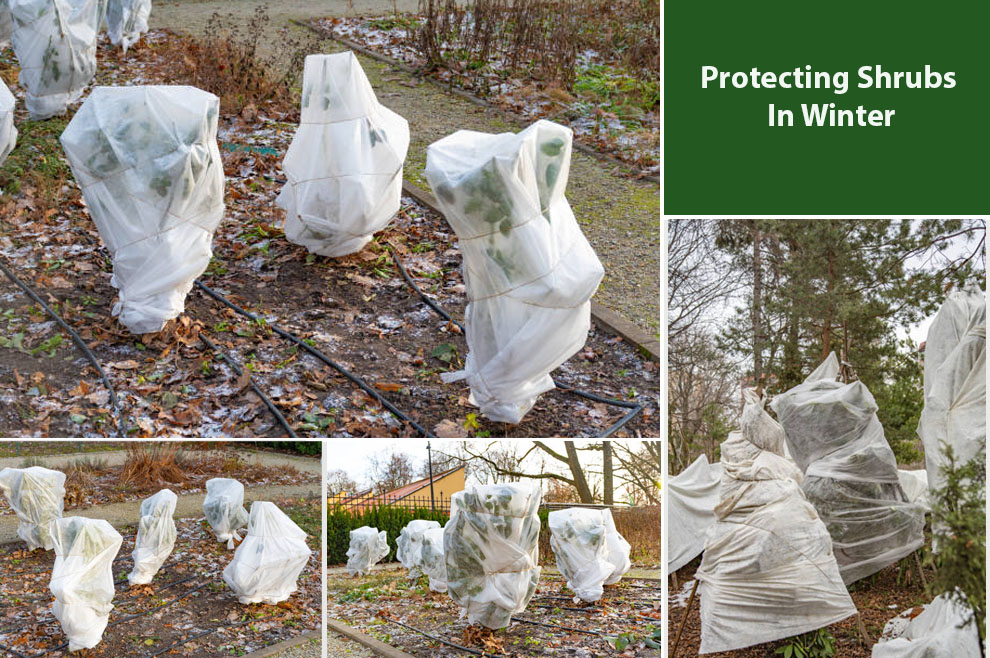
Even though perennials, shrubs, and trees become dormant in the winter, intense sun, fluctuating temperatures, windy or dry conditions, and inadequate soil moisture can take a toll on their health. The damage is more severe on the evergreens because they remain active even in the cold season.
This is visible between winter and spring when the shrubs are dying or are in their recovery mode. Hence, protecting shrubs in winter becomes imperative to keep them alive and healthy for a long time.
With the correct measures, your plants and shrubs will remain healthy and survive the harsh weather. They will further reward you with the blooming, lush growth as the weather warms up again. So, what are the protective measures? Below, we will discuss them in brief.
Best Ways To Protect Shrubs In Winter
Evergreen and deciduous plants and shrubs can employ some guarding against the winter elements to return strong and healthy in the spring. Winter winds can be particularly damaging for the shrubs.
It might break the branches and stems and hit the plants with frigid cold air that is severely drying. However, there are several methods for protecting shrubs in winter, let’s have a look.
1. Prepping in advance for the winter
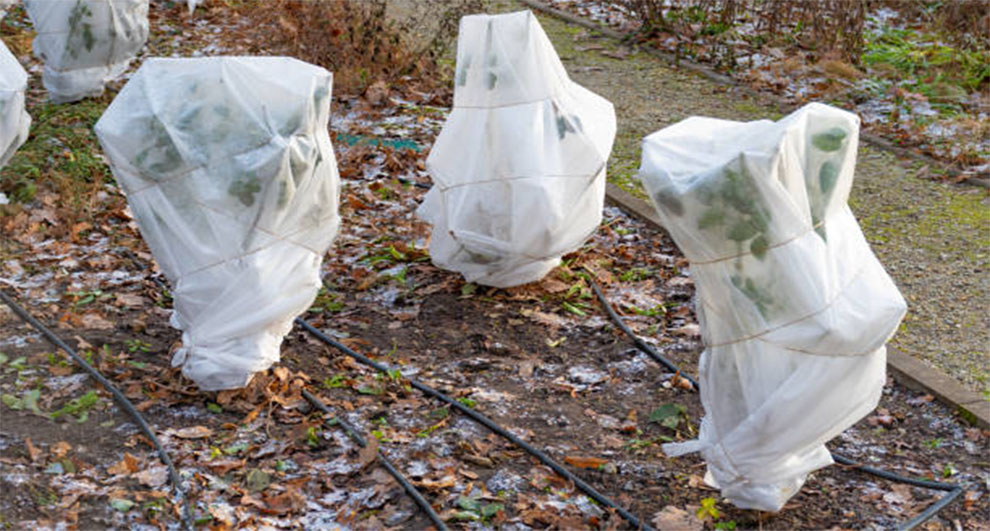
Prepping your plant for what’s about to come goes a long way in winter protection. Naturally speaking, a healthy plant can easily survive harsh weather.
But, if a plant has not received ample sunlight, nutrients, or water in the growing season or underwent damage from diseases or insects, it may fail to endure winter damage. Hence, actively prepping for winter bush protection goes a long way.
- You can begin with meticulous care for the plant from the growing season into the autumn. Firstly, do not prune them midsummer as it can result in new, tender growth and might postpone dormancy.
- Do not fertilize the plant six weeks before the first fall frost. It helps them harden properly.
- Lastly, you can protect your plants from winter damage by properly irrigating them before the first hard freeze strikes. Of course, botanists advise holding back on the irrigation during the autumn to let the plants harden off for the cold season.
However, it is equally important to water it adequately to maintain good soil moisture. It is an essential step towards winter protection for evergreen shrubs. Once your experience light frosts in the fall, you can irrigate the shrubs well and deep. Follow it with a layer of mulch to keep the soil warm and retain the moisture content.
2. Picking the cold hardy varieties
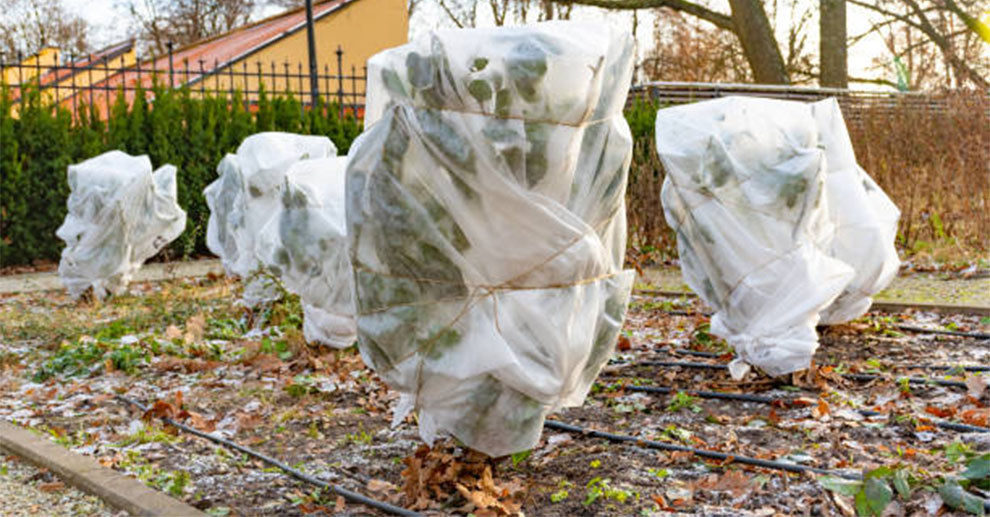
One of the most fool-proof methods for winter bush protection is picking the right plants. You can improve your plant’s susceptibility to surviving cold weather by selecting the plants suited for the climate.
So, when you choose shrubs for privacy, or other plants and trees for your landscape, check their hardiness zone and the available growing condition. It will help you get the most suitable plants for your location.
If for instance, you have a shrub that repeatedly struggles during the colder temperatures, consider replacing it with species that can thrive in the available growing conditions. It helps to grow plants native to your region.
3. Create windbreaks to protect plants against dry winds
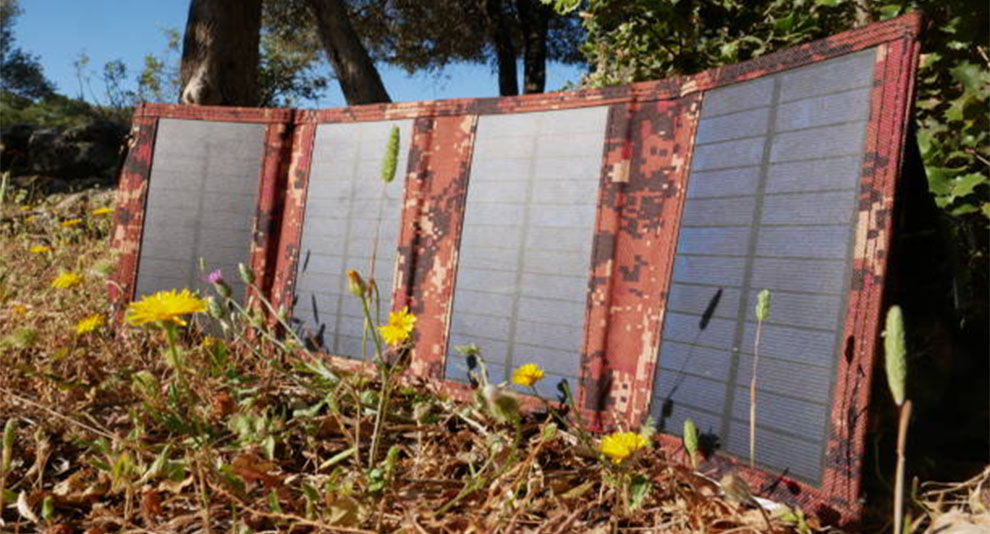
Drying winter winds can damage the evergreens. Windbreaks benefit as an active barrier for protecting the shrubs in the winter against the prevailing winds.
4. Hydrate your plants

During winters, the landscape may seem dormant, but many plants still use water during this period. Please keep a check on the weather and be cautious of the accumulated precipitation every month.
For needled and broadleaf evergreen shrubs, winter bush protection demands occasional irrigation across the winter. These plants lose water via transpiration, particularly during windy and dry periods when the sunlight is harsh.
If the plants lose water faster than roots can replenish, it makes them desiccated. In extreme cases, the complete branch may desiccate and die. Thus, regular irrigation is mandatory. It helps the plant maintain moisture during extreme conditions, especially when less water is available and the soil is cold.
To avoid this situation, regularly assess your plant for desiccation signs across the season. Needled evergreens may turn brown or rusty, while the broadleaf evergreens’ foliage may turn orange or yellow.
5. Mulching the newly planted roots
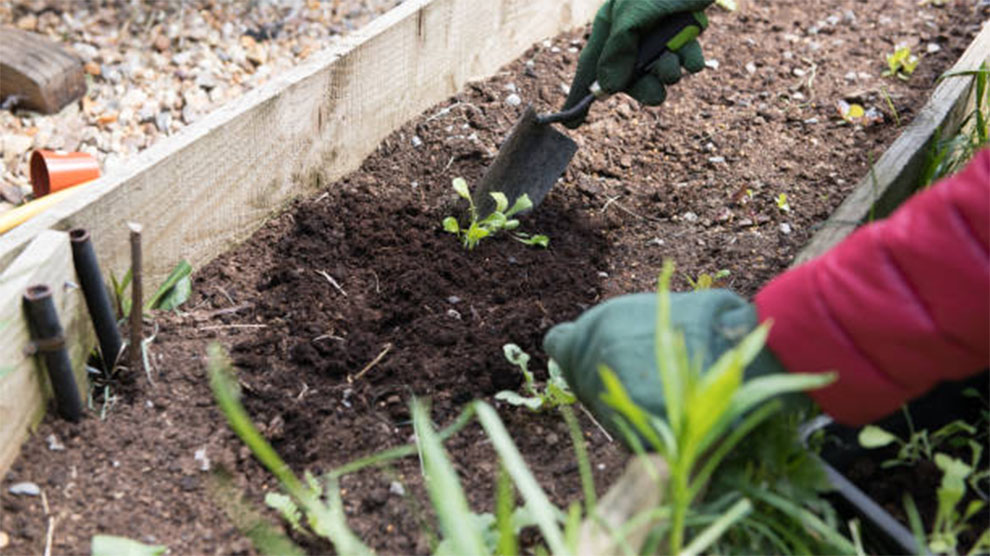
Mulch is a cover that helps insulate the soil and shield it against cold temperatures. Shrubs usually suffer less winter damage during a snow season over winters sans mulch snowfall. With a thick mulch layer, the plant’s roots have an insulation cover that is an excellent measure for protecting shrubs in winter.
However, incorrect mulch application can be disastrous for the plant. Here are the tips for using the mulch right:
- Apply mulch in the fall, before the first freeze.
- Use the mulching layer to cover the complete root zone. However, do not pile it against the plant’s trunk.
- Do not use more than two to three inches for freeze protection.
- You can use a straw, wood chips, or evergreen boughs to shield the root zone.
- Remove all the extra mulch in the early spring, but leave a layer to maintain moisture in the soil and keep weeds at bay.
6. Consider covering shrubs in winter
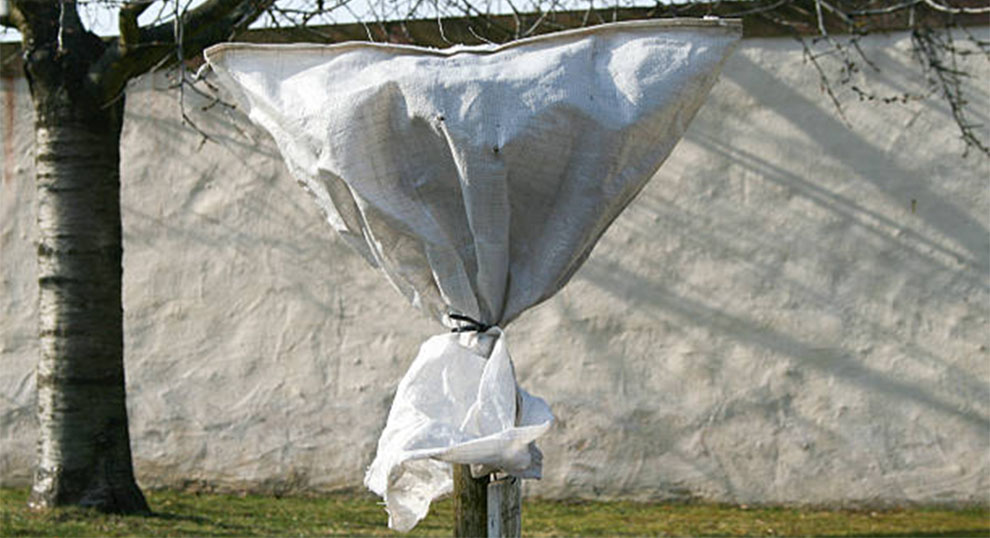
There are several techniques to wrap and guard the broadleaf evergreen and conifers in the winter. Here are some of our recommended measures:
A. Wrap the tree with twine
If the weather forecast predicts heavy snow, you must proactively cover the branches with twine. Begin at the bottom and go up in the spiral pattern, resulting in a conical-shaped shrub, preventing the tree from catching much snow.
B. Winterizing shrubs with burlap
Once you wrap the shrubs with a twine, enclose them with a commercial shrub wrap or a burlap sack if there is a threat of impending high winds or cold temperatures. The burlap weave is broad and gives ample space for the plants to breathe. In addition, it also keeps the biting winds at bay. Burlap covering also shields the plant against browsing deer.
C. Deter the animals through fencing
Scavenging animals like rabbits and mice tend to ravage the tender tree bark. So, the best way to shield them is by adding a wire, plastic tree guard, or a fence. It also helps avoid the sunscald and frost damage of the thin-barked or newly planted trees.
Alternatively, wrapping shrubs for winter with a paper tree wrap or covering the trunk with burlap can also shield them against winter weather and animals.
7. Use the anti-desiccant spray on leaves to prevent them from drying out
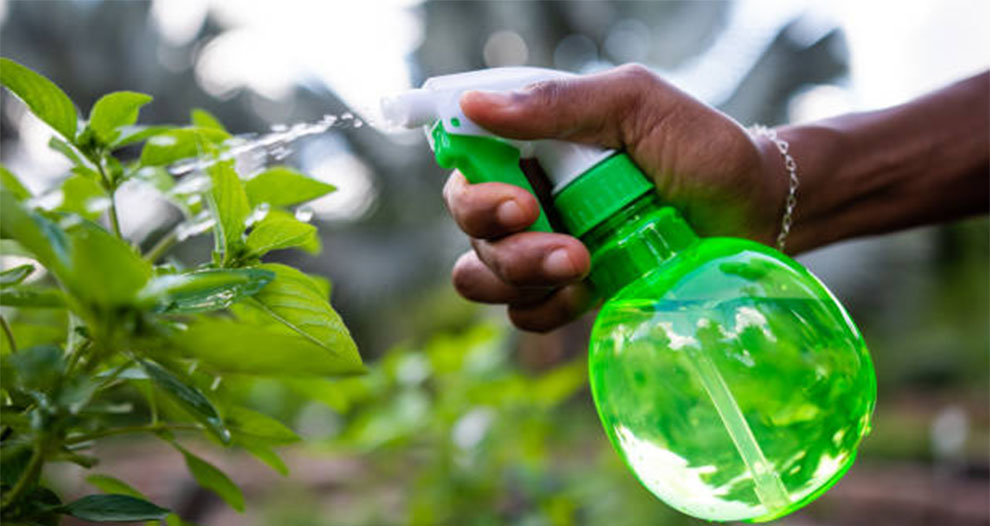
Also known as anti-transpirant, anti-desiccants are landscaping sprays that offer a protective coating to evergreen plants during the colder months. Spraying the anti-desiccant lowers the risk of moisture loss on evergreens.
During a ground freeze, the plant cannot absorb moisture. Hence, they steal it from the foliage, resulting in its dryness. It can kill or damage your plants. However, when you spray evergreen vegetation with anti-desiccants, they retain moisture during low temperatures.
If covering shrubs in winter is not possible for you, these sprays offer a protective coating on the foliage and do not let the water escape from the foliage. An anti-desiccant application in November and reapplication in January can guard the plant across the season.
8. Bring the potted plants indoors

One of the simplest ways for protecting shrubs in winter is simply picking them from the low temperature and bringing them indoors. So, if you have hanging baskets outdoors or potted plants, you can get them inside the home. Similarly, moving it to the sunroom or the garage may also help as that can increase the temperature by at least 10 degrees (Fahrenheit).
Related: Vegetables that grow in winters | Winter fruits to grow
Warning Signs of Winter Damage
A few giveaway signs of winter damage include:
- Brown foliage on the conifers indicates water loss, particularly during early spring or late winter.
- Shoot death
- Root Damage
- Brown foliage on the conifers on the upper half starts from wherein the snow line ends, but the lower end below the snow line will be healthy and green.
- Frost cracks on the limbs and trunks, especially on the southwest or south-facing portions of the deciduous trees/
Frequently Asked Questions
Ques 1. When should shrubs be wrapped for winter?
Ans. You can consider wrapping shrubs for winter in November. When your plants are new, cover them for the initial two years. As the plant ages, they are sturdier and capable of thriving in colder temperatures.
While plants can typically endure cold weather, if the temperature drops to 25 degrees or goes any lower for an extended period, protecting them helps.
Ques 2. Should you remove snow from bushes?
Ans. In the case of bigger trees and plants, it helps to remove the snow as frequently as you can. To prevent damage to the plant, you can also use a soft-headed broom to wipe the heavy snow.
It will suffer if you let the snow remain in contact with the leafage. Moreover, snow is weighed. So, if you do not remove it instantly, it can break the foliage.
Ques 3. When should you take the burlap off shrubs?
Ans. You must consider winterizing shrubs with burlap after the first frost. Many people cover the plant early in the fall. It does not let the plant harden well.
You can remove the burlap in early spring, between late March and early April. It helps to do it on a cloudy day to shield the plant against the sun’s harsh rays.
Summing up
Shrubs are beautiful garden workhorses that offer a spectacular structure with their vibrant foliage and flowers in winters. They offer a habitat for wildlife across the year, even in the winter. However, plants also feel cold and require protection against frigid temperatures like humans.
So, these are some of the top tips and ways for winter bush protection.
